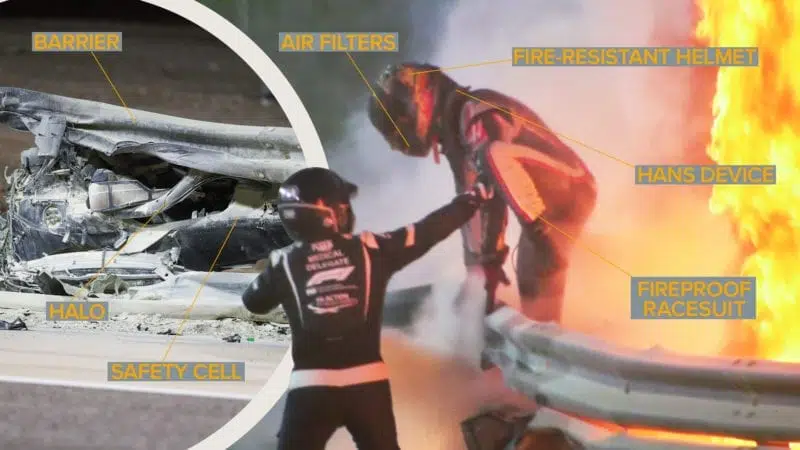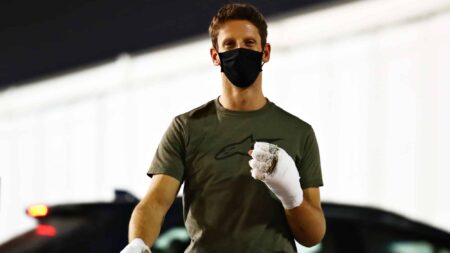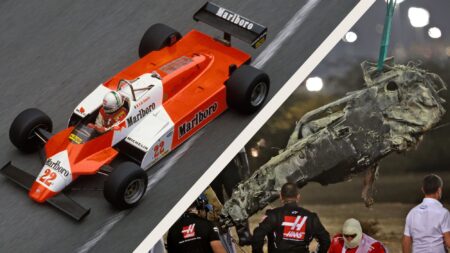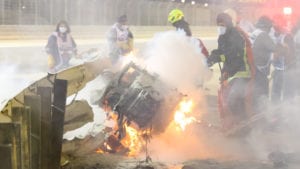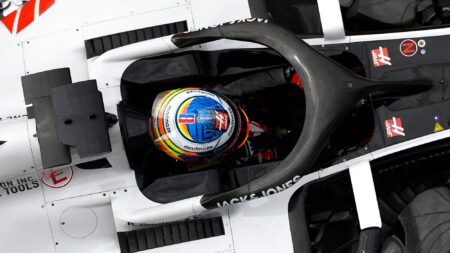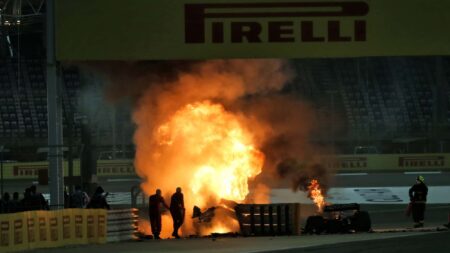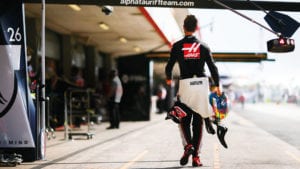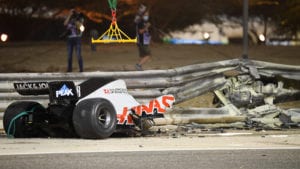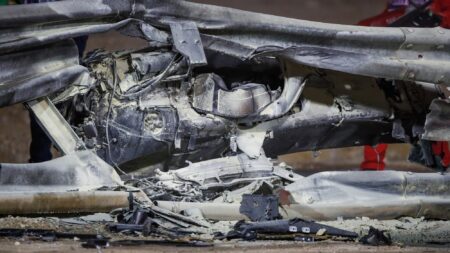That he was conscious to process those thoughts; in a fit state to walk away; and could withstand 28 seconds of intense flames is down to a number of safety features that prevented what is likely to have been a tragedy, just a few years earlier.
Some of the safety standards that Grosjean benefitted from had been in place for just a few months. Others were in the process of being improved further.
We’ve summarised several of the key features below, with links to read in more detail about how each one contributed to the astonishing images of Grosjean returning to the Bahrain circuit, just days after his crash.

Carbon fibre safety cell
Grosjean’s story of survival begins with the safety cell that surrounded him: the cocoon of carbon fibre and Kevlar that was extensively tested to ensure that it can withstand collisions such as the 53g impact that Grosjean sustained.
Pre-season crash tests in 2020 included hurling the front of cars towards a solid wall to ensure that they protected the occupant’s limbs; and that the fuel cell remained intact.
Another key measure is the energy transferred to the driver. In conjunction with the nose — a sacrificial crash structure that’s designed to absorb energy by crumpling — the safety cell must limit the g-force that an occupant is exposed to.
